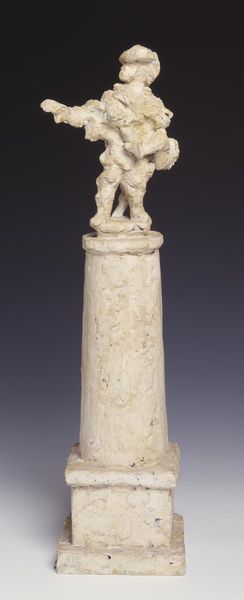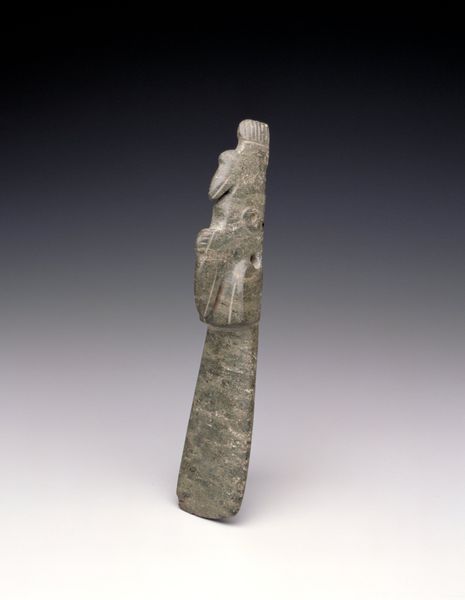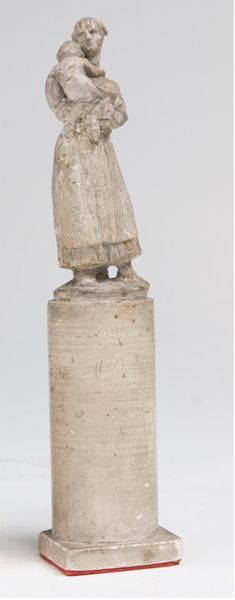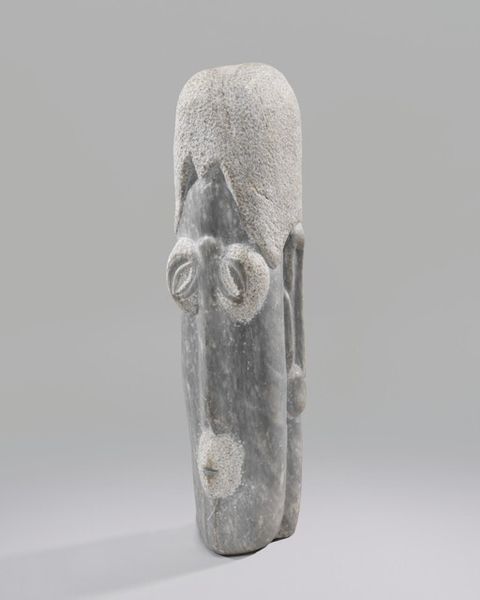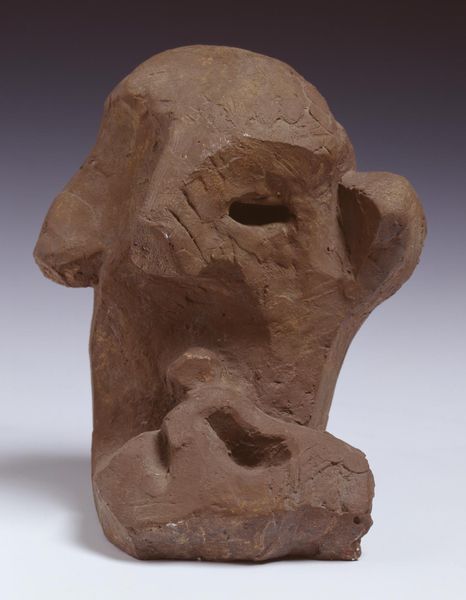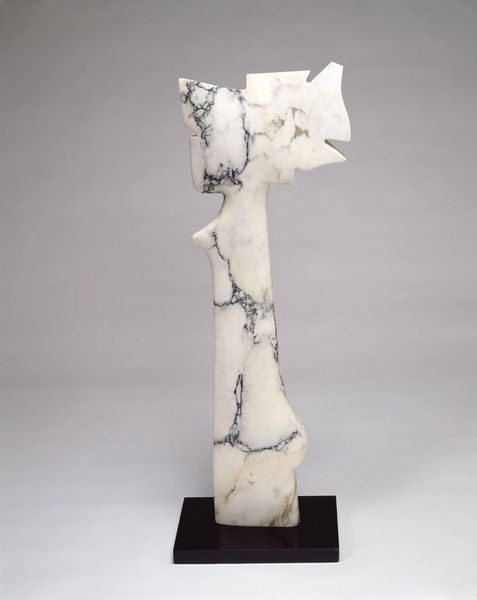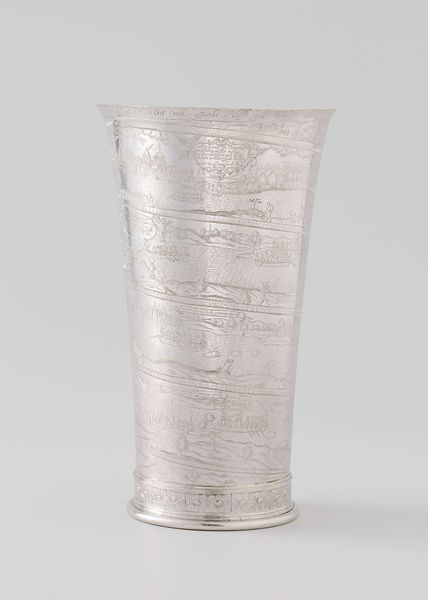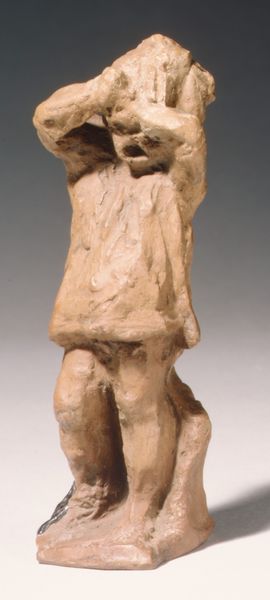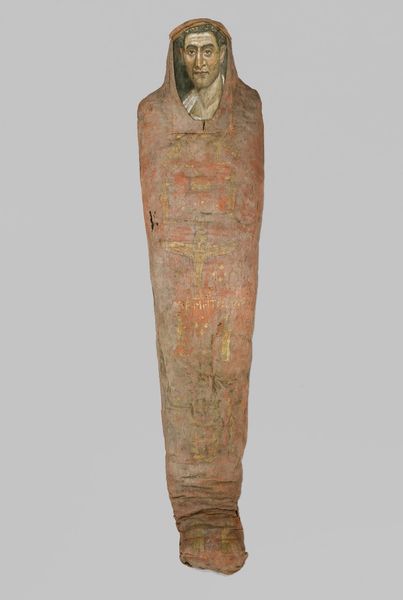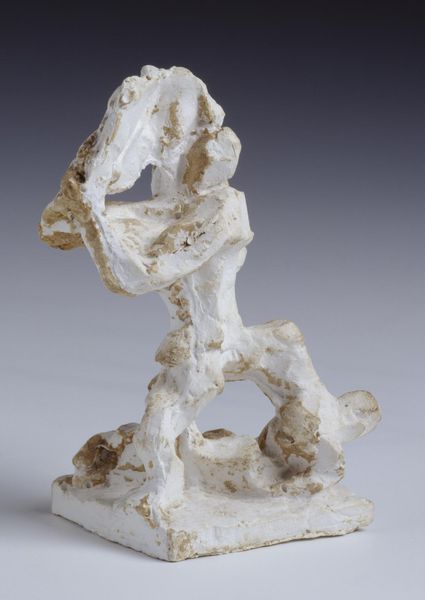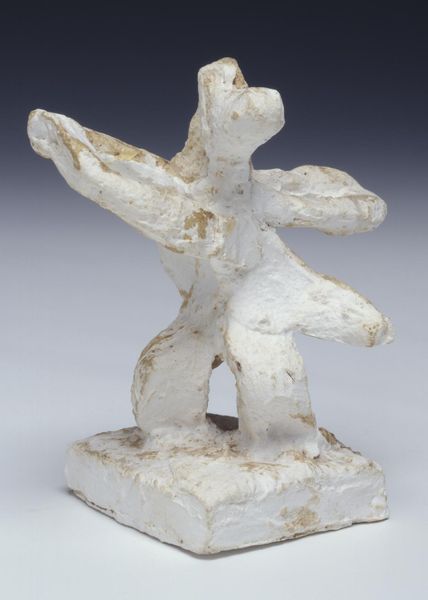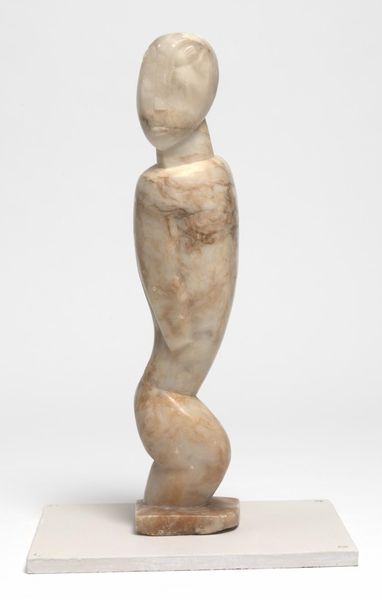
Dimensions: object: 317 x 89 x 89 mm
Copyright: © The estate of Jacques Lipchitz, courtesy, Marlborough Gallery, New York | CC-BY-NC-ND 4.0 DEED, Photo: Tate
Curator: At Tate, we have Jacques Lipchitz’s plaster maquette, "Study for a Monument." It seems quite small, only about a foot tall. Editor: It strikes me immediately as rather chaotic, almost violently so. The rough texture and the clashing forms... Curator: Right, Lipchitz's work often embodies a certain raw energy. This particular piece feels like a distillation of classical sculpture, viewed through a Cubist lens, wouldn’t you agree? Editor: Perhaps. Considering its title, I wonder what event or figure Lipchitz intended to commemorate. It’s hard to read any clear narrative here. Curator: Well, that ambiguity might be the point. Instead of a specific story, it conveys the weight and the burden of history itself. Editor: I suppose there is a universal quality to this rough, almost primal form. It does provoke contemplation of the monumental. Curator: Indeed, Lipchitz has given us an abstract, yet strangely powerful meditation on memory and meaning. Editor: Ultimately, its evocative nature inspires us to consider the nature of monuments and our relationship to history.
Comments
tate 8 months ago
⋮
http://www.tate.org.uk/art/artworks/lipchitz-study-for-a-monument-t03514
Join the conversation
Join millions of artists and users on Artera today and experience the ultimate creative platform.
tate 8 months ago
⋮
Lipchitz's left-wing sympathies led him to take an interest in the Soviet Union. The ideals and achievements of the Revolution impressed him and, in 1935, he visited relations in Russia. He subsequently wrote of his disillusion at the 'oppression and dictatorship' that he found. Nonetheless, he accepted a proposal to make a monument to the Revolution entitled Towards a New World, for which this is a study. In order to express the 'liberation of the Russian people through industry and agriculture' he envisaged a column topped by dancing figures. The commission came to nothing. Gallery label, March 2001
